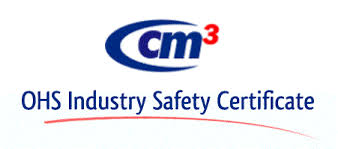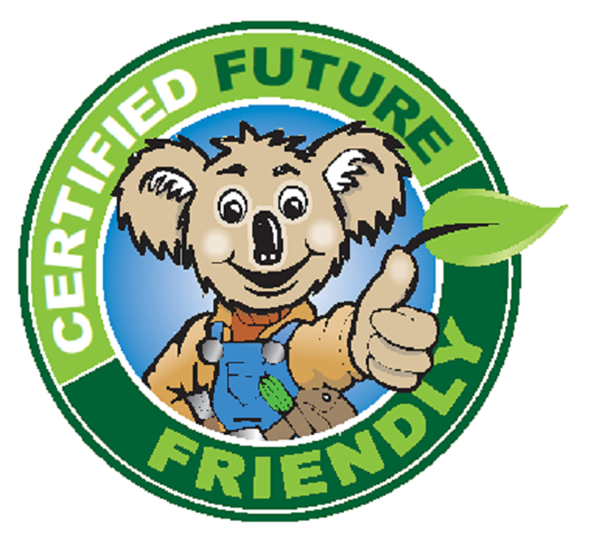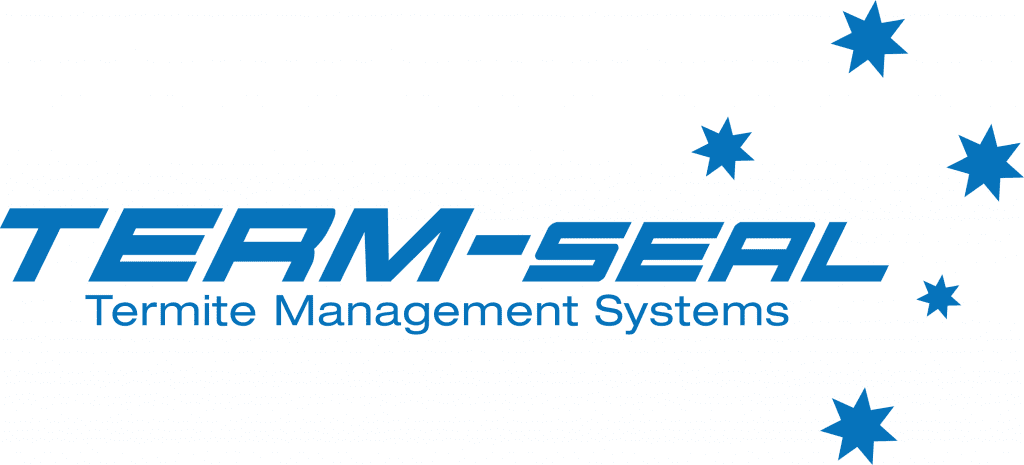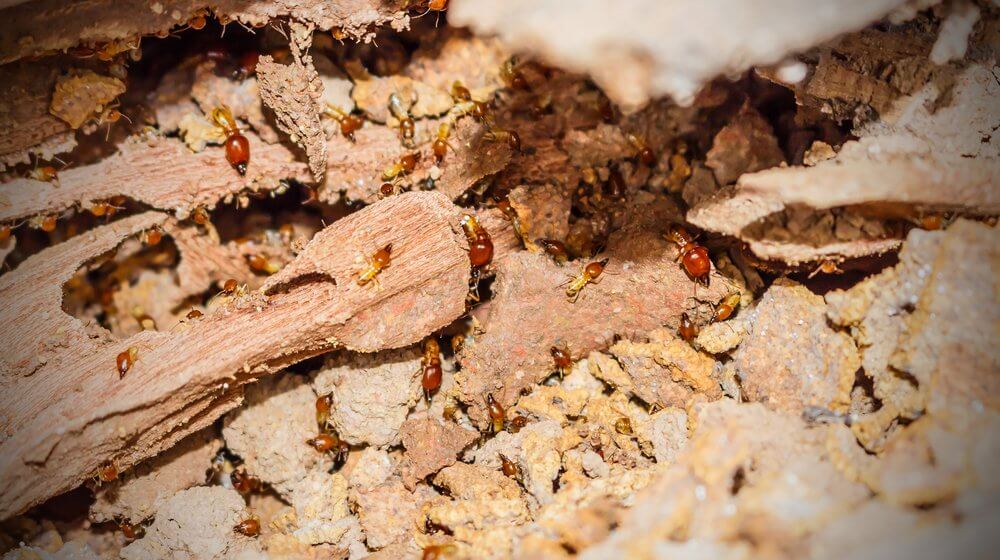Termite Prevention in Sydney
Hire a Professional Pest Control Team to Prevent Termites
We recommend that you work with a pest control team. Experts can help you assess and inspect your property for any signs of termites. They know how to handle dangerous pest control chemicals and implement the correct termite control in Sydney. Not only will it get you to get a lasting solution, but you also ensure the safety of your loved ones from harmful pest control chemicals.
Masters Pest Control Sydney is a certified AEPMA member. Our pest exterminators are fully licensed and insured to conduct all types of pest control services in Sydney and the surrounding suburbs. You can trust that the Masters of Pest Control will use only the latest and most effective IPM pest control methods.
Termite prevention is an important undertaking for homeowners to ensure that termites do not cause any property damage. We provide effective termite prevention measures to avoid any termite infestation and termite damage on your property.
For enquiries, call the masters at (02) 8007 4666 or chat with our specialist now!
Tell us your pest problem
FREE QUOTE
Everything You Need to Know About Preventing Termites
Signs of a Termite Infestation in Your Home
1) Clicking sounds coming from your walls
Termites are extremely noisy eaters, so much so that if you were to pay close attention, you might hear ”munching sounds" coming from inside the walls. It is the worker termites feeding into your home that make this noise. Studies have shown that music has the effect of disturbing the regular eating habits of termites, exponentially increasing their appetites, resulting in them consuming your house at twice their usual rate.
2) A sudden rise in flying termites
While flying termites - better known as swarmers - don't cause any direct damage to your house, they are known to be a direct indication of the presence of a termite infestation. Therefore, termites are an essential prerequisite for their flying cousins.
Flying termites kick themselves into high gear when temperatures start rising, causing them to disperse in random directions to search for new colonies elsewhere. This search ends up on your doorstep.
They also swarm around light sources during the night and immediately after rain. So expect flying termites to start swarming as soon as you detect such changes in the climate.
3) Hollow compromised wood
Termites do not have the habit of eating their food face first. Instead, they prefer devouring it from the inside out, 24 hours a day, nonstop. The result is that over time, the flesh of the wood gets consumed, leaving a hollow space inside what could be rightly termed as a thin wafer made out of timber. Knocking this wood, if it could be called that anymore produces an empty sound.
4) Difficulty opening and closing windows
The constant eating and tunnelling eventually warp the shape of windows, making it increasingly harder to open and close them. Most people usually attribute this to moisture, but termites generate moisture during their feeding frenzies.
5) Termite droppings
All creatures drop faeces, and termites are no exception to that. These droppings are a dark substance that is somewhat powdery, an obvious sign that there are nests inside your walls.
If you have a termite infestation, call for help instead of taking matters into your own hands. We have years of training to permanently handle termite infestations using state-of-the-art equipment and highly trained personnel.
Call our team on (02) 8007 4666 to help you prevent any termite infestations.
Homeowners despise termites because they can cause major damage to properties. Here are some termite prevention tips from our expert pest controllers in Sydney. No pest infestation is fun, but one of the worst to encounter is termites, as the damage and loss they cause to homeowners can be immense.
Termites are a bigger nuisance than any other type of insect infestation because termites cause structural damage to your house. According to estimates, the subterranean termites alone caused more than 2 billion dollars of damage in a year to households and other buildings, a figure that is significantly higher than that of losses from domestic fires and heavy storms.
What Makes Termites so Dangerous?
Most of the termite species feed on dead plant material. These materials include leaf litter and wood, and therefore they are harmful to wooden structures of buildings and crops. Like ants, termites are social insects and live in colonies, which means that they infest any place in large numbers. In Australia, around 300 species of termites exist, of which 30 are potentially dangerous to building structures.
How can I prevent a termite infestation?
Remove Moisture Around Your Property
Termites are attracted to moisture. To deal with termites, it’s important to remove sources of moisture around your property. Make sure to fix any water leaks or plumbing problems. Conduct regular checks and seal off leaks to prevent moisture from encouraging termite infestation.
Inspect Wooden Furniture
Check your furniture regularly for any signs of termites. These bugs feed on wood and can infest your furniture without you noticing. It is important to prevent termites from infesting your furniture since they can easily spread to other parts of your home. Look for telltale signs such as holes and cracks in the wood.
Inspect Your Lawn For Signs Of Termite Infestations
Your lawn is a perfect nesting place for termites. To best deal with termites, the first step is to inspect your lawn. If you see signs of termites, do not take matters into your own hands. Get in touch with pest control experts who can help with subterranean termites without causing damage to your lawn.
Hire professionals to do a regular building and pest infestation on your property.
Schedule an annual pest inspection to avoid having a termite problem. Professionals have advanced tools that can detect a budding termite infestation inside the walls or in and around the foundations of your property. Chat now to enquire about our termite inspection!


Hire the masters of pest control to get rid of termites. Call our team on (02) 8007 4666 to help you prevent any termite infestations.
Termite Prevention
Types of Termite Prevention Methods
Termite Bait System
Termite bait is a versatile termite treatment method that can be installed outside of your property. Since wood is known to attract termites, these systems have a wooden base. When the termite approaches the wood, a poisonous lace replaces it, which the insect proceeds to feast on. After that, the termite carries the poisonous food to the whole colony. This is a great device that can be found in many stores.
Termite Barriers
This is one of the most economical ways of getting rid of termites home. It uses different termite products such as Termidor as a termite barrier. Fripnoil is an active substance that can be found in Termidor. It acts by attracting the termites to themselves, and then once they have entered the affected area, they die off slowly.
Nowadays, most of us tend to opt for more eco-friendly pest control techniques for almost anything. However, when it comes to stopping termites, time is not on your side. There is no one out there who would like to see their house damaged to such a great extent that it needs major repairs. Therefore it is crucial to ensure the best termite prevention treatment is in place to protect your home. An annual termite inspection conducted by a reliable pest manager is also recommended to ensure that your property stays pest-free.
General Information About Termites
Termites are a soft-bodied social group of insects of the scientific order Isoptera. Due to their way of life and eating habits, they can cause severe damage to homes at a steady rate. It is effortless to distinguish termites from other similar small insects by simply comparing their traits, such as the abdomen. The termites’ abdomen broadly connects the thorax, unlike some other insects such as ants, where a slender petiole connects these segments. Moreover, the antennae of termites are threadlike or beadlike, which is another one of their distinguishing features. Since termites tend to eat wood primarily, it is necessary to have basic prevention measures. If you don’t, you might suffer an infestation from them without even realising it. (Related: How to get rid of termites)
Diet, Behaviour And Habits Of Termites
The diet and behaviour of termites depending on the species. Most people have a perception that termites are small ant-like creatures that feed on wood. While this is true to some extent, they are bigger than ants and feed on more than just wood.
The typical diet of an average termite is the cellulose found in wood fibre. Some species of termites like the Formosan love to invade soil and create mud tunnels. These ‘tunnels’ serve as their nest. Just like honey bees, termites also have a queen that they follow. The queen can lay up to 1,000 eggs per day. When certain termites develop wings and are released from the colonies, they establish new ones.
One of the things you have to do as part of your termite control campaign is to have yearly termite inspections carried out by a professional pest controller. You have to monitor your property and thoroughly check for any signs of damage that have occurred. As with any other living species, water is essential for the survival of termites. Because of this, you have to make sure that there are no leaks either in or around your house. Regular maintenance of your home through termite inspections will reduce the risk of termite infestation.
Make sure that you do regular checks on all of the plumbing and also replace any old washers. Paying attention and getting rid of any leaks and drips will remove favourable termite habitats. Another thing that you should take care of is to regularly clean your gutter and drain pipes so that there is no standing water anywhere near your home at any point. Making regular checks for any presence of termites or their nests is a must. A good thing to know is that dry termites leave characteristic piles of dirt after them underneath any wooden structures. This can help you to find out if there is an infestation going on during the regular inspections that you make.
Subterranean termites, a different class of termites, can be distinguished because they leave mud tunnels in the places where they travel. These are some characteristics that can help you find out what kind of termites you are dealing with. On the other hand, a good idea might be to call a professional pest controller to know what signs to look for and where. It is worth noting that building a home using termite-resistant woods such as cedar, redwood, and juniper will prevent pest infestations, including termites.
Annual Termite Inspections
There are three main subtypes of termites that can infest your house
Subterranean Termites
This type of termites lives underground. They usually build their nests in dark and moist environments. Tree roots, sides and bases of building walls, and timber floors are places that termites find suitable for their habitat. If walls and floorings of any building are made of wood, keeping a check on termites becomes crucial as they will weaken the foundations and make them shallow as they feed on them. Jeopardising the whole structural integrity of the building is unsafe and highly dangerous. Their tendency to make underground nests makes them the most harmful type of termite.
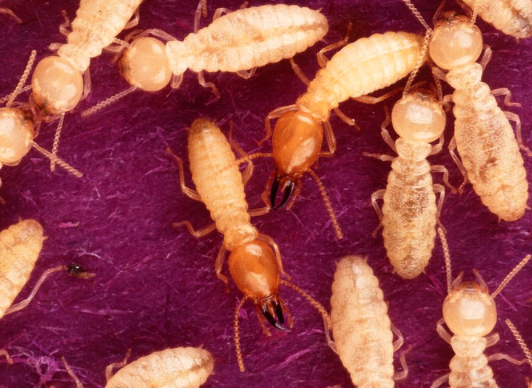

Subterranean Termites
Dampwood Termites
After subterranean termites, these cause the most damage to houses and buildings in Sydney. They prefer to live in moist conditions and usually make their nests above the ground.
Drywood termites
Unlike subterranean and damp wood termites, dry wood termites avoid damp conditions and grounds. Instead, they live in small colonies and feed on dry wood items. If damp wood termites infest your house, wooden furniture items, wooden ceilings, and frames can be their place of habitation.
Prevention is Key
Many Sydney Suburbs are at Great Risk of Termite Damage
With spring season right around the corner, households in many suburban areas become vulnerable to the wrath of termite infestation. North Shore, Eastern Suburbs, Hills District, Northern Beaches, St George, Sutherland and Western Suburbs in metropolitan Sydney get plagued with termites every year during this time of year.
Castle Hill, Blacktown, Baulkham Hills, Winston Hills, Wahroonga, Dural, Balgowlah Manly, Epping, Frenchs Forest, Carlingford, Leichhardt, Marrickville are also considered the most vulnerable suburban sites for termite infestation.
Termite Inspection or Building and Pest Inspections: The First Line of Defence Against Termite Infestation
Renowned architect and director of Archicentre (the Australian Institute of Architects), Robert Caulfield, dubbed termites as one of the leading causes of structural damage in Australia. He emphasised that people should have their houses inspected for termite infestation because early detection can save money in repairing and remodelling costs. In his own words, “With the average treatment and repair cost estimated to be in the order of $10,000, it's vital to limit the damage.''
As Caulfield signifies the importance of early detection of termite infestation, it is imperative to get professional help to have your property inspected before it's too late. Professional termite control teams not only do visual external inspections but also use high-end equipment to detect the infestation and its extent. Using fibre optic cameras and thermal imaging are some of the non-invasive techniques they use to look inside the walls for termite infestation. Even if your house isn't made of timber structures, termites are notorious for causing damage to even brick houses in Sydney.
Many Aussies believe that fire, earthquakes, hurricanes and other acts of God are the only way through which their property can get damaged. However, the combined effect of these natural disasters fades in comparison to the threat posed by termites, primarily because it largely goes undetected.
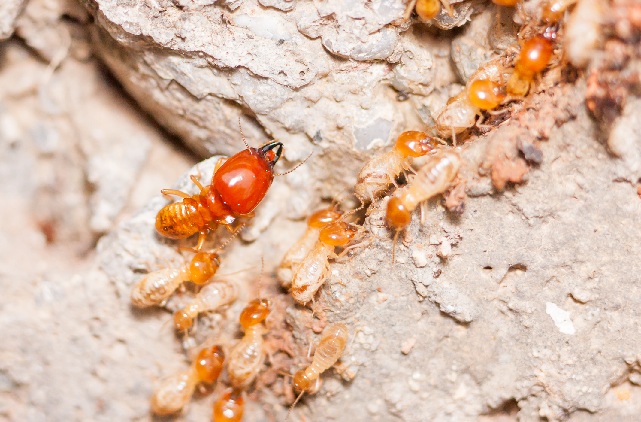

Termite prevention Sydney
Your biggest mistake is underestimating the damage potential of termites, the silent enemy. The damage they cause can amount to billions of dollars annually, the stress being on annually. They prefer to hide in nooks and crannies while using their undetectable size and relatively harmless body image to escape detection and scrutiny by homeowners. They're not just a mild annoyance you can treat as an afterthought. Their combined efforts can result in your entire house collapsing on itself!
They're smaller than ants, and so no one superimposes the image of terror on these little critters. But these monsters cause substantial damage to your property, compromising the structural integrity of your house. They feed vital aspects of a building's structure, such as support beams, ceiling supports and even wall studs. To make things worse, most homeowner insurance policies do not cover the damage caused by termites.
Termites are built to devour wood and have specially designed antennas to detect the size, quality and quality of the wood they plan on munching next. But they eat more than just wood. Their voracious appetite includes metals and even plasters. So don't rest easy if the wood is not an integral part of your housing structure.
It is therefore of pertinent importance to detect telltale signs of termite infestation before it's too late. Homeowners should definitely make an effort to nip the problem in the bud.
What are some ways to stop termite infestations?
Home Termite Infestations
A termite infestation is not something that should be taken lightly. Therefore, it is better to book a professional inspection and termite control services in all instances of a termite problem.
However, we've compiled a list of things you do at home to control termites. These methods might not help you entirely get rid of termites, but they might slow down a termite infestation and prevent further damages to your property.
What are some things you can do at home to prevent the spread of termite infestation?
Termites cost billions of dollars due to the structural damage they cause all around the world. However, unlike other pest infestations, many people find out about the presence of termites when they have already done considerable damage to the property. Follow these simple tips to help you prevent termites from spreading around your home.
Expose the infested items to sunlight.
Nearly all types of termites prefer to live in dark and murky places because light, especially natural sunlight, threatens their existence. You can't expose inner wooden linings to sunlight, but it is possible to place infested furniture in sunlight.
3 to 5 days before you get professional services to control termites, place all the infected detachable timber items outside in direct sunlight. We get plenty of sun during this season which can help to control termites by killing and reducing their activity through ultraviolet rays.
Use sodium borate and diatomaceous earth.
Another off-the-shelf product that you can use before the arrival of professional help is sodium borate, also known as borax. It is available in powder form, which is used to coat wooden surfaces that termites infest. Borax is very effective against subterranean termite infestation. Due to its strong dehydrating properties, it sucks up all the moisture from the exoskeleton of termites, resulting in their eventual demise.
Like borax, Diatomaceous Earth (DE) is an amorphous substance used to dehydrate these insects. DE is an organic product made of fossilised bacteria that can be used for many of its benefits.
However, it is not advisable to only treat your space with borax to control termites. A follow-up professional termite control is necessary to get rid of the pest problem effectively.
Use of soapy liquid on affected areas.
A solution of liquid dish wash soap can also be used to control termites in the house. Make a solution and fill it in a spray bottle to treat infested areas. A thin film made of lather can form an impervious seal on the exoskeleton of termites, which can fail their respiratory system.
However, there is a problem with this treatment method. It is a water-based solution and can cause warping in wooden structures. Therefore, it is better to call for professional help since they can control termites without damaging wooden surfaces.
Add salt and pepper.
Some of the daily food ingredients are also used to control termites. For example, pepper powder (cayenne) can be sprinkled on affected areas to eliminate termites. But this treatment is only suitable for small horizontal infested sites. For bigger and vertical infested areas, you will still need an expert termite control treatment.
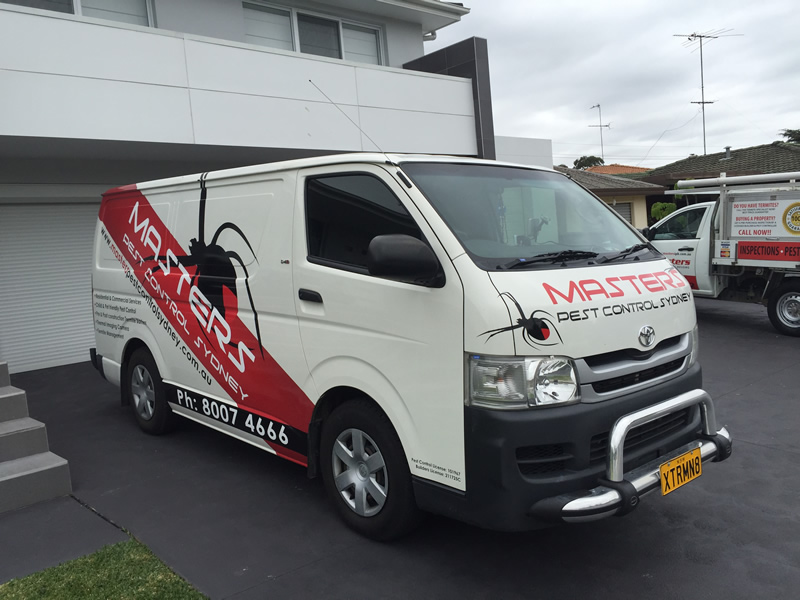

Our mobile vehicles are always available for any termite inspections.
Likewise, a sprinkling of simple table salt can keep termites at bay. In addition, it can prevent further damage of termite infestation while you schedule professional treatment.
Hire Professional Termite Exterminators.
Even if your house hasn't been infested with termites, it is better to have professional inspections from time to time. Inspections are also important in termite infestation because it's tricky to identify the problem independently.
Whether you want to have your house inspected or get it treated to control termites, Master Pest Control Sydney is one of the best professional pest exterminators you can find in Sydney.
Chat now or call (02) 8007 4666 to request a quote!

